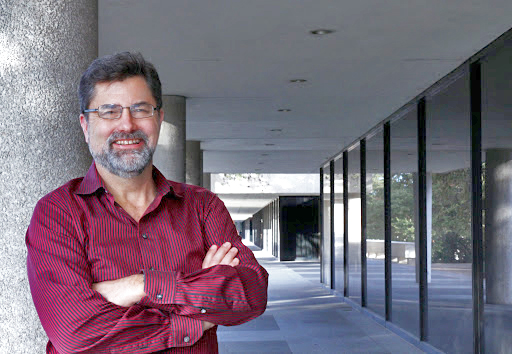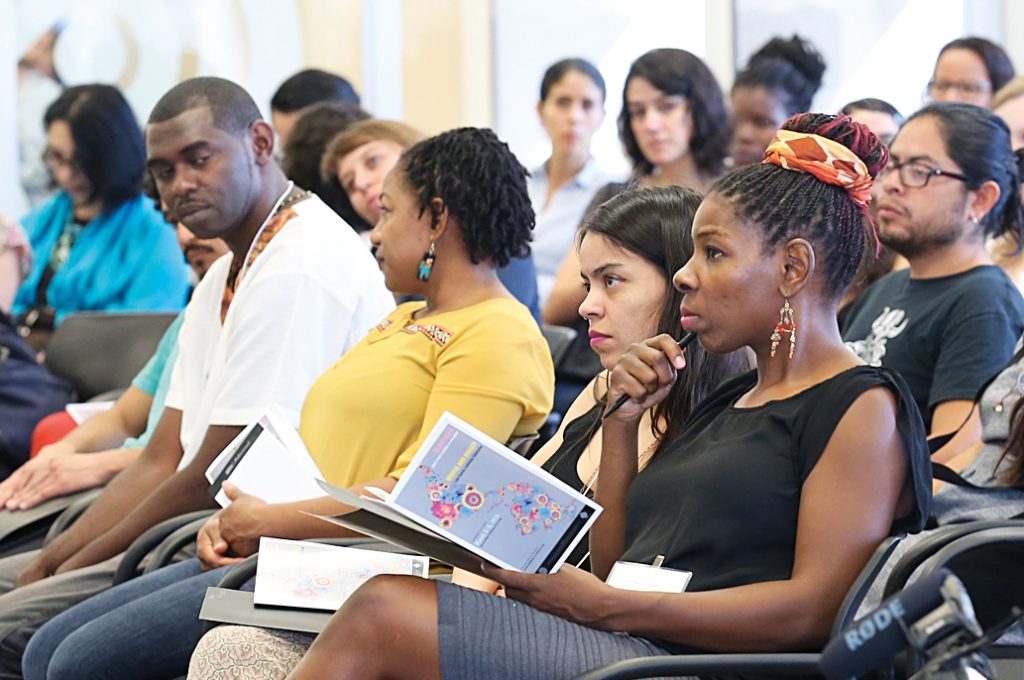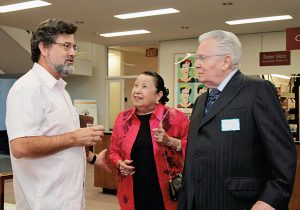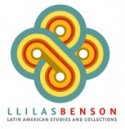
BY CHARLES R. HALE
I take this opportunity—the last Portal produced under my directorship—to offer a few words of thanks, an expression of excitement for the future, and some reflections on the past seven years. By the time this Portal reaches your hands, Professor Virginia Garrard-Burnett will have begun her four-year term as the second director of LLILAS Benson Latin American Studies and Collections. I am immensely pleased that Ginny has accepted the position, and deeply grateful to Dean Randy Diehl and Vice Provost Lorraine Haricombe for their constant, energetic support of LLILAS Benson, and for many sage decisions like naming her. Ginny developed strong affective and professional ties with LLILAS from her first days at our university. She brings to the job a distinguished career in history and religious studies, combined with passion for the interdisciplinary field of Latin American studies (LAS). Her leadership style, well proven in other settings, combines adamant pluralism with a quiet inner fortitude and a resounding clarity of vision. I know she will affirm what has been best and most successful about LLILAS Benson, while providing a strong impetus for innovation.
Difficult Beginnings
Within a year of my becoming LLILAS director, three distinct blows left us reeling. In mid-2010 we learned that we barely missed achieving renewal of our federal Title VI grant, on which centers like ours depend. We had to rethink our organization, without the 200,000-plus dollars annually that this grant had provided. Second, in the wake of the 2008 financial crisis, university budgets shrank; in a first round of cuts mandated to address shortfalls, the university’s College of Liberal Arts announced that our center would need to give back up to 30 percent of our budget. Third, the Benson Collection had gone without a director for at least four years and morale was beginning to suffer. Talk of major restructuring of the Benson raised the concern that this gem of the university might see its historic preeminence erode. Although both units had great reservoirs of resilience, on which we would draw amply to move forward, we felt embattled, fragmented, on the defensive.
Transformative Initiatives
The turnaround, and forging of an upward trajectory that has continued strongly to this day, began with initiatives intended both to seize opportunities and to address key problems. What started as a pragmatic response to the budget crisis grew into a guiding principle: expansive, sustainable organization-building in public universities requires significant infusions of autonomously held endowment funds. Some will view this as an unwarranted concession to private power over public goods; while I do not completely reject this critique, I prefer compromised forward motion to principled paralysis. In the restructuring that followed, we hired a major gifts officer, a coordinator in charge of alumni relations, and a grants specialist; together these three help us generate a regular flow of increased revenue.
The second, and surely the most consequential, transformation is the LLILAS Benson partnership. Under the wise guidance of Fred Heath, then vice provost and director of University of Texas Libraries, we took a series of steps that eventually blossomed into a full-fledged partnership, bringing LLILAS and the Benson together under a single director. Although cost efficiencies did figure in the original rationale, the central impetus always was to reap benefits from transformed workflows and organizational structure; we soon began to reap these benefits amply, especially with the expansion of the “collaborative space”: where the dividing line between a library and a teaching-research unit fades, replaced by a task-oriented convergence of professional staff, faculty, and students, each with distinctive contributions. Whether the particular activity is digital scholarship, post-custodial archival projects, scholarly exchange, or exhibitions for public education, the collaborative space enriches our work and helps us meet our goals more fully.

A few years after we launched the partnership, we began work on our student programs. We streamlined our undergraduate major in LAS; and in 2014, we rolled out an energized program for doctoral studies to complement the vibrant and growing MA and dual MA–professional degree options. Our goal in the PhD revitalization—to recruit and train three top-notch doctoral students per year—has been achieved and surpassed, with welcome unintended effects: a powerful injection of energy into the MA program, and an unprecedented dynamism in our graduate program. External grants, conference presentations, books published, and other honors are yielding a resounding verdict: interdisciplinary methods, diversity (both racial-ethnic and international), and education with social impact make for a winning combination. Our graduate program truly has become the best in the nation!
Finally, and most recently, we have shifted focus from a conventional publications program to a communications office, charged with making sure our many publics stay fully informed about all we do and the impact our work has. Digital communications and social media have taken on ever-greater importance in this strategy, and we are beginning to make inroads in other media as well. Never again will the nation’s premier locale for Latin American studies remain a well-kept secret.
Unexpected Pleasures
Especially in the last few years, my work as director has been a source of both satisfaction and unexpected pleasures. I found, for example, that I genuinely enjoy what we call “systems” work: that constant process of refinement and modification of organizational structures and routines, to help us meet our goals more effectively. Alongside systems are budgets. Especially given our wonderfully talented administrative personnel, I have enjoyed and taken great pride in our five-year quest to produce a comprehensive budget for the partnership (totaling more than $3 million annually). This budget plays a vital role in representing our organization to others, and in helping us plan for the best use of scarce resources. Then there is social media. I entered LLILAS in 2009 a social media curmudgeon, and came out a convert—even if still a neophyte. Finally, I grew fascinated and fully engaged with development. Most academics spurn fund-raising as compromised or unpleasant; in contrast, I have found it an engaging challenge to find the “sweet spot” where donor interests and organizational mission meet. And it has been a source of inspiration to get acquainted with the individuals—starting with Joe Long and Teresa Lozano Long—who are our most important benefactors.

Some Lessons Learned
There were a few things I already knew how to do upon taking on this job, and a whole lot that I learned in the process. Here are four nuggets that I can confidently recommend to my successor. First is the art of the 55-minute meeting. With a few exceptions, we conducted nearly all LLILAS Benson business in 60-minute slots, and rarely suffered from inadequate discussion time. Second, I learned that staff empowerment is key to organizational success. While we deeply value longevity, the most important values we encourage in our staff consist of a combined ethos of collective solidarity and individual fulfillment. We want all staff members to realize their dreams and reach their full potential—inside the organization if possible—but always with this “realization” goal front and center. The third realm of learning for me is the power of libraries to remake and revitalize learning, communication, inquiry, and discovery—the core functions of any great university. Although as a scholar I always valued libraries and archives, the partnership has raised that appreciation to a new plane: from here forward my own research and teaching programs will always be infused with library-centered thinking about what I do, and how it gets done. Finally, I have gained a new appreciation for pluralism with a purpose. With 160 diverse, driven faculty affiliates, one can never expect to please everyone; but the LLILAS Benson director has the solemn responsibility to solicit and hear the views of all. At the same time, pluralism without a strong sense of purpose—a compass to forge the way forward—will not, in the long run, command anyone’s respect. Being able to strike the fine balance between these two somewhat contradictory affirmations will always be an important measure of success in achieving our mission.
Conclusions
The most succinct expression of this purpose over the past seven years has been to remake Latin American studies. The axes of this transformation are threefold: replace North-South hierarchies in resources and routines of knowledge production with horizontal relations; replace individual or unilateral advancement with a commitment to collaboration; conduct teaching and research that meet the highest standards of academic rigor, while also achieving impact with a social justice lens. These axes both affirm and redefine the central goal of excellence that our president has named as the cornerstone of university life. In so doing, they have allowed us to make LLILAS Benson into something more than a workplace. On my most exciting and fulfilling days I like to think of LLILAS Benson as one expression of a much larger project: putting into practice the core values of a different kind of society, one where we would want to live, one that we are each doing our part to build.
Charles R. Hale is the outgoing director of LLILAS Benson. He is a professor in the departments of African and African Diaspora Studies and Anthropology at UT Austin.


